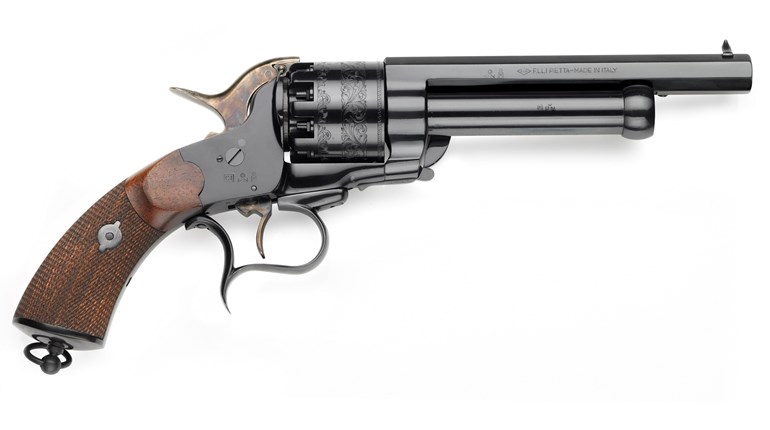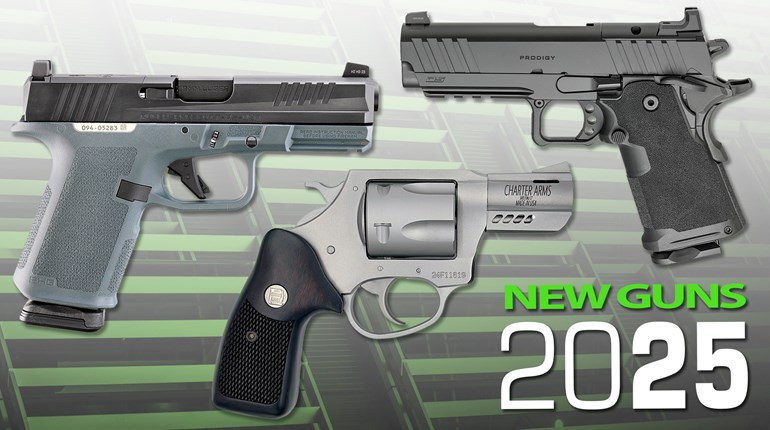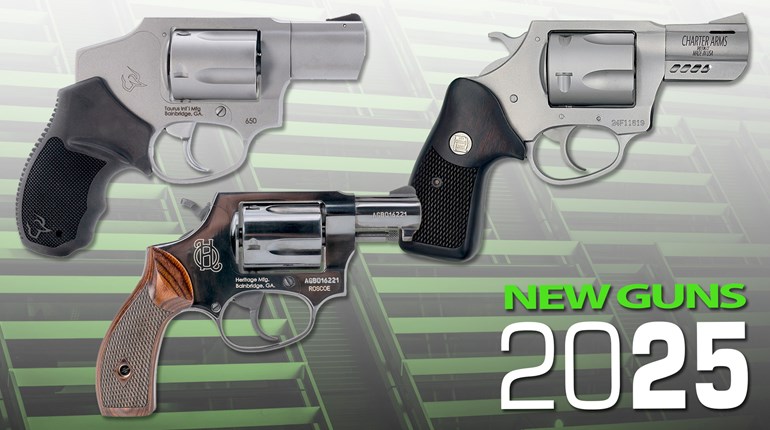
It might be surprising to learn that even in 2021, some people are still carrying small-frame revolvers like the Ruger LCR or one of the various models of Smith & Wesson J-frame. While they might not be as popular as they were in the 1980s, the small-frame revolver is certainly still a viable choice for everyday carry; however, though most defensive shootings involve very few rounds actually being fired, the low capacity of small revolvers means that you’re more likely to need to reload one in an emergency than a larger-capacity gun. Even if you’ve successfully defended yourself, you don’t want to be waiting around with an empty gun for law enforcement to arrive. So, you’ll need to carry extra ammo and know how to reload quickly.
Carrying Spares
Preloaded speed loaders and speed strips are effective ways to carry extra ammunition. The most-common speed loaders use a twist-style release, where twisting a knob on the top of the loader releases the rounds into the cylinder. A second type of speed loader is push-style, where pushing the loader directly into the cylinder releases the rounds.
A speed strip is a piece of flexible plastic that holds 5-8 rounds (depending on the model).
The Weak-Hand Reload
In the weak-hand reload, the revolver is transferred to the weak or support hand during the reload, which holds the gun and cylinder while the strong hand inserts the fresh cartridges.
1. Use the firing hand thumb to press (or pull) the cylinder latch.
2. Use two fingers of the weak hand to push the cylinder out of the window and into the open position.
3. Retain the revolver in your weak hand with the cylinder open. Two fingers should be through the window. Use these along with your support-side thumb to control the cylinder.
4. While safely pointing the muzzle near vertical, press the ejection rod smartly with your thumb, or strike it sharply with your strong hand to eject the empty cases. Because most small revolvers have short ejection rods, it’s important to vigorously articulate the ejector while keeping the muzzle up. Gravity is your friend.
5. Point the muzzle toward the ground and grab your speed loader or speed strip with your strong hand.
6. If using a speed loader: Grip the loader so that the tip of your index finger touches one of the cartridges. This creates a physical index so you can “point” the rounds into the weapon. Because this is a fine-motor skill, it’s advised to look at the cylinder to properly orient the rounds. Insert and release them using whatever method the loader needs. If using a twist-knob speed loader, make sure to keep the cylinder immobilized. If using a speed strip: Holding the cylinder still, use your strong hand to insert two rounds into the cylinder and “peel” the speed strip away. Repeat this process until the revolver is full.
7. Close the cylinder and re-establish your master grip while moving the gun back on target (if necessary).
The Strong-Hand Reload
In the second reload, the revolver stays in the firing hand during the entire process. This may be easier for shooters who are accustomed to semi-automatic pistols to learn, but it has the disadvantage of being difficult to do with twist-style speed loaders. Because the support hand can’t stabilize the cylinder, a twist-style speed loader would spin the cylinder.
Steps 1 and 2 for the strong-hand reload are the same as the weak-hand reload, so this will begin with step 3.
3. Keep the revolver in your firing hand and use the palm of your support hand to smartly actuate the ejector rod. Again, safely point the revolver near vertical.
4. Point the revolver muzzle toward the ground while grabbing your speed strip or speed loader with your weak hand.
5. If using a speed loader: Grip the loader with the index finger of your weak hand touching the body of one of the cartridges. Physically point the round into one of the charge holes. Press the loader into the cylinder, actuating the release. Gravity will help drop the rounds into the chambers. If you are using a speed strip, keep your weak hand thumb on the back of the speed strip, insert the first two rounds and peel the strip away. Repeat the process until the cylinder is full.
6. Close the cylinder with your weak hand and re-establish your master grip while bringing the gun back on target (if necessary).
A note on speed strips: Some experts will carry a five-shot strip with four rounds loaded into it. This gives them a better grip on the loader for efficiency, while sacrificing a round of capacity, but it also comes with the serious downside of possibly having your hammer fall on an empty chamber at the next trigger pull. Another solution for this could be to carry a seven-shot loader and load it to match the five-round capacity of your small revolver.
Practice, Practice, Practice
Quickly reloading a revolver is an inherently difficult prospect, but with consistent practice you can develop enough skill that you’ll be able to perform reloads efficiently. Make sure to follow safety rules and utilize snap caps when training in dry practice!

































